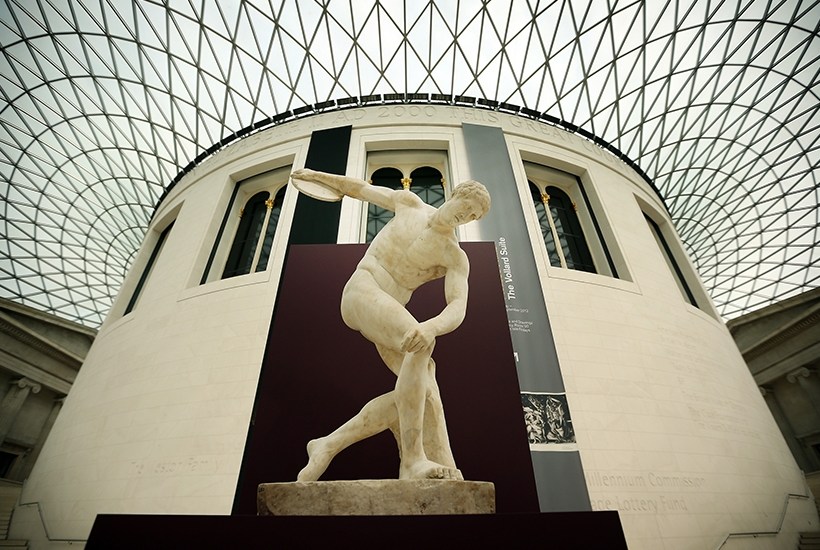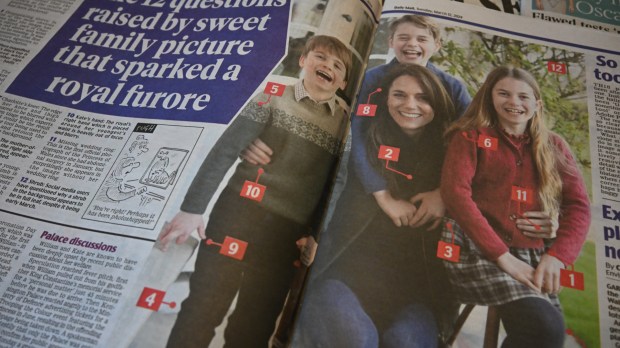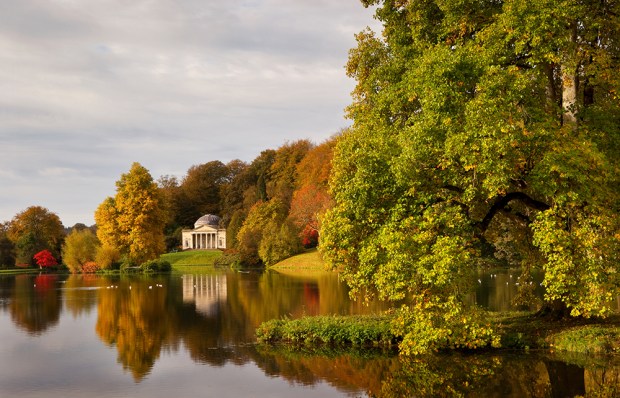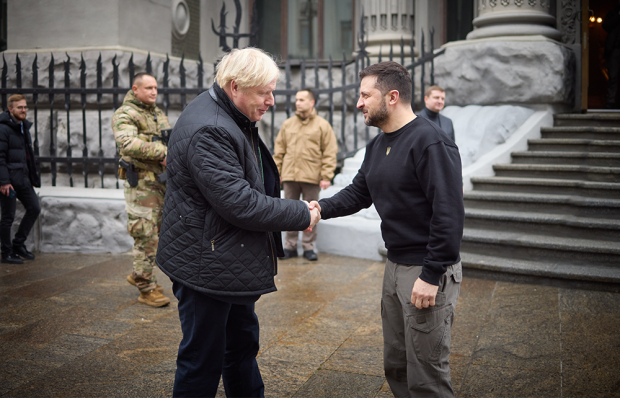‘The British Museum stands in solidarity with the British Black community, with the African American community, with the Black community throughout the world. We are aligned with the spirit and soul of Black Lives Matter everywhere.’ So blogged the director of the British Museum, Hartwig Fischer, shortly after the death of George Floyd. Many such messages were rushed out by institutions, colleges and businesses at the time. It was never really clear why. Why did one cruel death, above all the other cruel deaths always happening in the world, require this collective response? What led Dr Fischer to assume that ‘the British Black community’ must be at one with the aims of Black Lives Matter? How much did he and the Museum in general know of the ‘spirit and soul’ of that movement when he declared that they were ‘aligned’ with them? And why is it the business of the leaders of a great public collection to take a political stand for a highly controversial and borderline-violent campaign?
I ask these questions now, because Dr Fischer has used the Covid interval to reorganise this, the greatest of all British collections. In an interview with the Daily Telegraph on Tuesday, in advance of the museum’s reopening this week, he explains that he is moving the bust of Sir Hans Sloane, whose vast collection has remained one of the three founding elements of the BM since it started in 1753. ‘We have pushed him off his pedestal,’ says Dr Fischer. Now Sloane is to be locked in a display cabinet ‘alongside artefacts that explain his work in the “exploitative context of the British Empire”.’ This new Chamber of Horrors also features Captain James Cook, who mapped Australia, and others whose artefacts come from ‘colonial conquest and military looting’. ‘Dedication to truthfulness when it comes to history is absolutely crucial,’ says Dr Fischer.
In that spirit of truthfulness, it might be worth pausing to consider the life of Hans Sloane. Born in Northern Ireland in 1660, he studied chemistry and its medical applications, with particular interest in botany’s relation to physic. He became a doctor, and a great collector. When serving the governor of Jamaica, he systematically explored the topography of the island and recorded and collected its flora, bringing 800 specimens home to England. His published catalogue of the plants of Jamaica was probably the most truly scientific of his era in the genre, paving the way for Linnaeus. He was for 68 years a fellow of the Royal Society, taking charge of the publication of its transactions and serving as secretary. He succeeded Isaac Newton as its president. Sloane was also physician in charge of Christ’s Hospital in London, returning his salary to the place and supporting the cost-price dispensary of the Royal College of Physicians. As doctor to Queen Anne, he is credited with prolonging her life, thus securing the Hanoverian succession. He was a pioneer supporter of inoculation, popularised quinine and promoted the mixing of chocolate with milk in the cause both of profit and temperance. Sloane was noted for his learning, his consistent benevolence, his modesty and being very ‘attentive to Matters of Fact’. He conveyed the Chelsea Physick Garden, which he owned, to the care of the Society of Apothecaries. It flourishes beautifully to this day. The grateful society commissioned a statue and a bust of Sloane by Rysbrack. Sloane’s daughters presented these works to the British Museum. It is Rysbrack’s bust which Dr Fischer has now gleefully ‘pushed off its pedestal’, inviting visitors, as from this week, to disapprove of its subject.
So why has the public-spirited Sloane now been put in the stocks of history by the director and trustees of the museum of which he was arguably the most generous benefactor ever? Really because of his marriage. His wife, Elizabeth Langley, as well as being rich through her alderman father, was the widow of Fulke Rose, who left her a third of the income from his estates in Jamaica. These were worked by slaves. Dr Fischer says ‘We must never hide anything’, but this fact has never been hidden from the British Museum or anybody else. For more than 200 years, most people in Britain have strongly disapproved of slavery (as few did in Sloane’s lifetime). The British Museum has had two centuries to consider any moral qualms it might have about profiting in this indirect manner. Now it reacts unprofessionally, in panic clothed as principle — and with base ingratitude.
In his Telegraph interview, Dr Fischer stoutly defends the BM’s sponsorship by BP, which attracts the rage of eco-warriors. ‘Corporate sponsorship is integral to our business model,’ he says. ‘It allows visitors to see things we wouldn’t otherwise be able to offer.’ The same could be said, with knobs on, of legacies like Sloane’s. Why does he defend BP, but attack Sloane? I suppose because Sir Hans, unlike BP, has suffered what Yeats called the ‘discourtesy of death’. If you were a philanthropist, would you want to leave anything to a museum that behaved this way?
As one battles on, a reluctant volunteer in the culture war which the left is fighting on every front with enviable efficiency, it is frustrating that the millions who hate what is happening are not being properly led. On the whole, government responses are reactive rather than proactive, and late at that. Boris Johnson said the right things about BLM supporters’ defacing of the statue of Churchill, but almost a week after the event. In the row about ‘Rule, Britannia’ at the last night of the Proms, Sir Keir Starmer actually got in before Boris, backing the traditional last night, in a soft-focus way, as being ‘a staple of the British summer’. Only then did the Prime Minister rather breathlessly enter the fray. He complained of ‘wetness’ about our history. That is misplaced: the attacks on our history are not wet, but fiercely pointed and carefully planned. They need coordinated resistance.
Got something to add? Join the discussion and comment below.
Get 10 issues for just $10
Subscribe to The Spectator Australia today for the next 10 magazine issues, plus full online access, for just $10.
You might disagree with half of it, but you’ll enjoy reading all of it. Try your first month for free, then just $2 a week for the remainder of your first year.















Comments
Don't miss out
Join the conversation with other Spectator Australia readers. Subscribe to leave a comment.
SUBSCRIBEAlready a subscriber? Log in